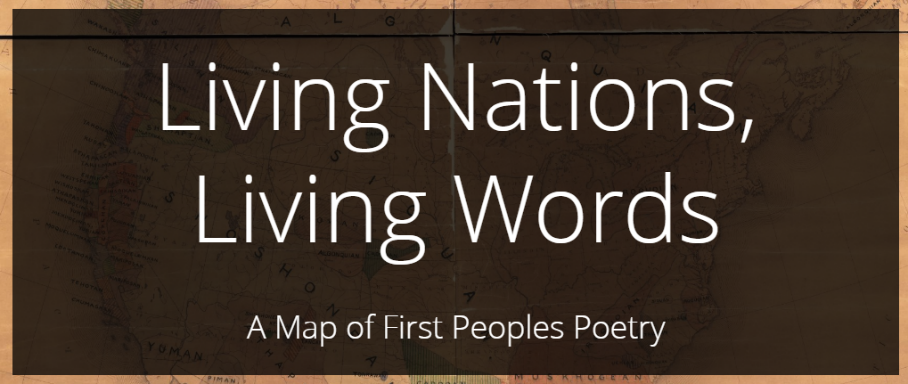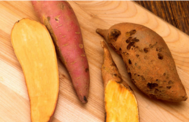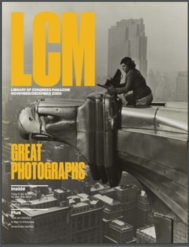Search Results for Significant
Links
Saddleback Christian Academy is a group of families who come together to support one another and share in homeschooling their children. We offer ...
|
News
I have never really identified much with my ancestry -- race and nationality are not things that matter much to me. I am proud of America, or more so its foundation of faith and history of sacrifice for liberty. (That's different than being proud to be an American, something which I did not choose, but nevertheless choose to remain.)Â
However, these Ukrainian history markers catch my attention, perhaps because of my Ukrainian ancestry, but more likely because they are fascinating history. It is a region rich with history, but largely unknown in the west.
Posted by Skanderbeg over on RedState:
Today In History – 6 December 1240
With all my travel to and around Ukraine, I have indeed made it to Kyiv (that’s the Ukrainian version of “Kiev”). Kyiv is beyond beautiful. Kyiv is majestic.
Kyiv began as a Norse outpost. As Viking traders began to make use of a fairly easy route to Constantinople (up the Narva River, a fairly easy portage across modest terrain, and then an easy journey down the Dniepro River to the Black Sea), around 800 they established a fortified post at about the only terrain feature along the Dniepro – some high bluffs along the western bank. Thus was born the city of Kyiv.
The local Slavs realized quickly that these Viking traders, whom they called Varangians or Rus, knew what they were doing. Lacking leadership themselves, they came to the traders and made an offer. They offered the lead guy kingship, and the choice of any one of their many excellent-looking princesses to be his queen.
With good leadership and a good position along a major trade route, Kyiv grew rapidly in strength, wealth, and importance. In 988, the Kyivan leader Prince Vladimir accepted Christianity from Byzantine missionaries – while one of those missionaries, Cyril, gave the Slavs a written alphabet for their language. Vladimir ordered all his subjects to convert with him; they were all herded along the main boulevard of Kyiv – called to this day “Christening Boulevard” – and into the shallows of the Dniepro for a mass baptism.
Kyiv continued to grow and prosper as an eastern outpost of civilization. By the early 13th century, it was the second largest city in Europe – second only to Paris – with a population of 50,000.
But all that came to an abrupt end on 6 December 1240.
When dawn broke over Kyiv on 6 December 1240, the population was 50,000.
By nightfall, the population had been effectively reduced to zero.
After a brief siege, the Mongols, led by Genghis Khan’s grandson Batu, broke into the city. The city was quickly pillaged, burned, and demolished. Gone were the 400 churches. Gone were the monasteries. Gone was the legendary “Zoloti Varota,” the famous “Golden Gate” – known musically as “The Great Gate of Kiev.” And gone, mostly, were the 50,000 inhabitants – slaughtered or, for the few survivors, dragged off into slavery.
Think you’re having a bad day? Methinks that 6 December 1240 qualifies as the ultimate “bad day.”
"OK, I am considering homeschooling... what does this have to do with homeschooling?" you ask. Well nothing, except... tell me if you learned any of this in public school?!?
Oh, the history of the Mongols and Vikings goes much deeper and has far more impact upon what you might consider "relevant" history. The shape of Christian Europe, your church, and religious practices might be significantly different without these two powerful forces in history. It's not just Ukraine; try England, France, Germany, and Italy... getting more "relevant"?
Dig a little deeper... no dumbed down, politically correct, and State approved textbook is needed.
That's the power of homeschooling.
|
So what’s the deal with high fructose corn syrup. It must be safe since the FDA has approved its use in so many of America’s processed food items. Just look at almost any food item found with a label and you will see high fructose corn syrup listed as one of the first 3 ingredients.ÂÂ
The corn industry has even tried to convince us that, in moderation, HFCS is perfectly fine. The fact that most American meals are composed of pre-packaged, processed foods, I doubt moderation is being practiced.ÂÂ
High Fructose Corn Syrup transforms you into an eating machine. Once consumed, it sets into motion a chemical cascade that begins with spiked insulin and ends with feel-good molecules known as “endorphinsâ€Â. This leaves you feeling intoxicated by artificial feel-good endorphins. Your brain is unable to sense overeating and demands more. All the excess calories are then stored as fat.  This has been a huge factor in the rise of obesity, Type II Diabetes and heart disease in our nation.
Now, after reading this article, I learned that in a recent study, mercury was found in high fructose corn syrup.ÂÂ
“Mercury is toxic in all its forms. Given how much high-fructose corn syrup is consumed by children, it could be a significant additional source of mercury never before considered. We are calling for immediate changes by industry and the [U.S. Food and Drug Administration] to help stop this avoidable mercury contamination of the food supply,†the Institute for Agriculture and Trade Policy’s Dr. David Wallinga, a co-author of both studies, said in a prepared statement.
This is just one more reason we should avoid anything processed or manmade in our diets. By eating whole, unprocessed, organic foods, we are reducing the risk of disease and obesity in ourselves and our families.ÂÂ
Post from: Homeschool Fitness Coach
|
Political protests have a rich past, with varied degrees of success. Here are some of the most memorable.
|
November News from the Library of CongressNovember is Native American Heritage Month
 What started at the turn of the century as an effort to create a day of recognition for the significant contributions the first Americans made to the establishment and growth of the U.S., has resulted in a month being designated for that purpose.The Library of Congress, National Archives and Records Administration, National Endowment for the Humanities, National Gallery of Art, National Park Service, Smithsonian Institution and United States Holocaust Memorial Museum join in paying tribute to the rich ancestry and traditions of Native Americans with this joint web portal highlighting collections, resources and events: nativeamericanheritagemonth.gov/? What started at the turn of the century as an effort to create a day of recognition for the significant contributions the first Americans made to the establishment and growth of the U.S., has resulted in a month being designated for that purpose.The Library of Congress, National Archives and Records Administration, National Endowment for the Humanities, National Gallery of Art, National Park Service, Smithsonian Institution and United States Holocaust Memorial Museum join in paying tribute to the rich ancestry and traditions of Native Americans with this joint web portal highlighting collections, resources and events: nativeamericanheritagemonth.gov/?  Living Nations, Living WordsEarlier this month, Librarian of Congress Carla Hayden appointed U.S. Poet Laureate Joy Harjo to a third term, making Harjo the second laureate to receive this extension since terms for the position were established in 1943.During her third term, Harjo will focus on her signature project, “Living Nations, Living Words,”? a digital project that maps 47 contemporary Native American poets across the country. The map connects to a new online audio collection developed by Harjo and housed in the Library's American Folklife Center, which features the participating poets reading and discussing an original poem.Read the announcement: ? loc.gov/item/prn-20-075/?loclr=ealn Living Nations, Living WordsEarlier this month, Librarian of Congress Carla Hayden appointed U.S. Poet Laureate Joy Harjo to a third term, making Harjo the second laureate to receive this extension since terms for the position were established in 1943.During her third term, Harjo will focus on her signature project, “Living Nations, Living Words,”? a digital project that maps 47 contemporary Native American poets across the country. The map connects to a new online audio collection developed by Harjo and housed in the Library's American Folklife Center, which features the participating poets reading and discussing an original poem.Read the announcement: ? loc.gov/item/prn-20-075/?loclr=ealn  Everyday Mysteries: Sweet Potato vs. YamJust in time for Thanksgiving, tackle an important question – what's is the difference between sweet potatoes and yams? You can find out the answer to this question and other everyday mysteries by checking out fun science facts from the Library of Congress!Discover the Answer: loc.gov/everyday-mysteries/item/what-is-the-difference-between-sweet-potatoes-and-yams/?loclr=ealnEveryday Mysteries: loc.gov/everyday-mysteries/?loclr=ealn Everyday Mysteries: Sweet Potato vs. YamJust in time for Thanksgiving, tackle an important question – what's is the difference between sweet potatoes and yams? You can find out the answer to this question and other everyday mysteries by checking out fun science facts from the Library of Congress!Discover the Answer: loc.gov/everyday-mysteries/item/what-is-the-difference-between-sweet-potatoes-and-yams/?loclr=ealnEveryday Mysteries: loc.gov/everyday-mysteries/?loclr=ealn  New Virtual Series: Behind the BookIf you have ever wondered how a book goes from rough manuscript to published masterpiece and how an author rises from obscurity to fame, then a new series of programs from the Library of Congress is just for you. The new series, Behind the Book, provides a behind-the-scenes view of the world of American book publishing, highlighting the editors, designers, publicists, agents and publishers who make the books that win prizes and endure.? Series announcement and schedule: loc.gov/item/prn-20-078/?loclr=ealn 12/3 Webinar: "Influenza and Covid19: What To Expect This Winter"The Library of Congress' Health Services Division and Science, Technology and Business Division invite you to participate in a webinar, “Influenza and Covid19: What should we expect this winter?” featuring international experts on infectious disease outbreaks, epidemiology and modeling.? This webinar, scheduled for Thursday, Dec. 3 at 10 a.m., requires advance registration, which is limited to 1,000 participants. You can submit questions in advance for the panelists using the Ask A Librarian service. When submitting questions, please indicate that it is for the December 3 webinar.Register Now New Virtual Series: Behind the BookIf you have ever wondered how a book goes from rough manuscript to published masterpiece and how an author rises from obscurity to fame, then a new series of programs from the Library of Congress is just for you. The new series, Behind the Book, provides a behind-the-scenes view of the world of American book publishing, highlighting the editors, designers, publicists, agents and publishers who make the books that win prizes and endure.? Series announcement and schedule: loc.gov/item/prn-20-078/?loclr=ealn 12/3 Webinar: "Influenza and Covid19: What To Expect This Winter"The Library of Congress' Health Services Division and Science, Technology and Business Division invite you to participate in a webinar, “Influenza and Covid19: What should we expect this winter?” featuring international experts on infectious disease outbreaks, epidemiology and modeling.? This webinar, scheduled for Thursday, Dec. 3 at 10 a.m., requires advance registration, which is limited to 1,000 participants. You can submit questions in advance for the panelists using the Ask A Librarian service. When submitting questions, please indicate that it is for the December 3 webinar.Register Now  Library of Congress MagazineExceptional photographs communicate with viewers in a universal language to inspire, provoke, educate. In the November/December 2020 issue of LCM, Library of Congress curators and reference librarians choose great photographs from Library collections that have inspired them, including images from the dawn of the photography to the present day.Download Magazine: https://loc.gov/lcm/pdf/LCM_2020_1112.pdf Library Seeks Applicants for the 2021 Junior Fellows Summer Internship ProgramThe Library of Congress is seeking applicants for its next Junior Fellows Summer Internship Program, which will run from? May 24 – July 30, 2021. This 10-week paid internship is open to undergraduate and graduate students interested in learning and conducting research at the largest library in the world. For the second year in a row, the internship will be conducted virtually.? The deadline to apply is? Monday, Nov. 30, 2020. Students can learn more information or apply to the program by visiting? loc.gov/item/internships/junior-fellows-program/. Library of Congress MagazineExceptional photographs communicate with viewers in a universal language to inspire, provoke, educate. In the November/December 2020 issue of LCM, Library of Congress curators and reference librarians choose great photographs from Library collections that have inspired them, including images from the dawn of the photography to the present day.Download Magazine: https://loc.gov/lcm/pdf/LCM_2020_1112.pdf Library Seeks Applicants for the 2021 Junior Fellows Summer Internship ProgramThe Library of Congress is seeking applicants for its next Junior Fellows Summer Internship Program, which will run from? May 24 – July 30, 2021. This 10-week paid internship is open to undergraduate and graduate students interested in learning and conducting research at the largest library in the world. For the second year in a row, the internship will be conducted virtually.? The deadline to apply is? Monday, Nov. 30, 2020. Students can learn more information or apply to the program by visiting? loc.gov/item/internships/junior-fellows-program/. |
Watch these videos just added to the Library of Congress website.ARC Ensemble: Artists of the Royal Conservatory of Music, CanadaThe ARC Ensemble musicians (Artists of the Royal Conservatory of Music, Canada) are considered among Canada's leading cultural ambassadors. Its 20-year history of excellent concerts and superbly-produced recordings documents the ensemble's focus on the research and rediscovery of music suppressed and marginalized under the 20th century's repressive regimes.Conversation with Simon Wynberg of ARC Ensemble? Ziering-Conlon Initiative for Recovered Voices from The Colburn SchoolThe Colburn School's Ziering-Conlon Initiative for Recovered Voices encourages the performance and awareness of music by composers suppressed during the years of the Nazi regime in Europe. Artistic Director James Conlon conducts the school's orchestra in a significant work by the Austrian composer Franz Schreker, known in the early 20th century primarily for his operas.Conversation with Ziering-Conlon Initiative for Recovered Voices? Homegrown: Herb Ohta, Jr., Hawaiian Ukulele MasterMega songwriter Desmond Child ("Livin' on a Prayer," "You Give Love a Bad Name," "Dude Looks Like a Lady") tells the Library about writing one of his biggest hits, "Livin' La Vida Loca," in the late 1990s, when record executives were afraid Americans wouldn't know what "la vida loca" meant. The song was inducted into the 2022 class of the National Recording Registry.Conversation with Herb Ohta, Jr.? ? Joy Jumps from the PageThis event is part of the 12th annual Jonah S. Eskin Memorial Program, a feature supported by the Jonah S. Eskin Memorial Fund of the Library of Congress. The fund was established to honor the late son of Marcia and Barnet Eskin.? Before the Religious RightJoin the Kluge Center for a discussion with Gene Zubovich who explains the important role of liberal Protestants in the battles over poverty, segregation, and U.S. foreign relations in a global context.? Mary Lou Williams: Jazz, Race, Gender, and IconographyReporter, "Down Beat" columnist, author of "The Golden Age of Jazz" (1979), and photographer William P. Gottlieb (1917-2006) pioneered jazz iconography and shaped the American public's view of jazz. With access to Black jazz musicians in their work environments of nightclubs and concert halls and, in some cases, the private realms of these musicians' homes, Gottlieb documented New York's jazz scene during a ten-year period from 1938 to 1948. His photographs of jazz pianist-composer Mary Lou Williams (1910-1981) are exemplars of jazz iconography and serve as a case study of how Gottlieb depicted jazz musicians to the mainstream White public through his camera lens. Analysis of these photographs provide insight into the intersections of race, gender, and the politics of Jim Crow (racial segregation) with jazz.? Damon Galgut, Winner of the 2021 Booker PrizeWatch a conversation with South African novelist and playwright Damon Galgut in celebration of Africa Month. Galgut won the 2021 Booker Prize for his ninth novel "The Promise," a fictional account of a white South African family living on a farm outside Pretoria during the waning days of apartheid. Using humor to broach difficult subjects, the novel was praised by the Booker Prize judges for offering an "unambiguous commentary on the history of South Africa and of humanity itself."?
|



 Links
Links  Articles
Articles  Blogs
Blogs  Videos
Videos  News
News  Colors
Colors 

 New links
New links
